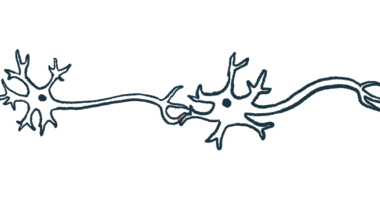#AANAM – Interim Results from Phase 2 Trial of Spinraza in Infants with SMA Support Efficacy, Safety

Spinal muscular atrophy (SMA) treatment with Biogen’s Spinraza (nusinersen) has resulted in motor milestone achievements in line with normal motor development and continues to provide benefit to infants who began receiving the treatment in a presymptomatic stage of the disease, according to interim clinical trial results.
The study, “Nusinersen in Infants Who Initiate Treatment in a Presymptomatic Stage of Spinal Muscular Atrophy (SMA): Interim Efficacy and Safety Results From the Phase 2 NURTURE Study,” was presented by Darryl De Vivo during the American Academy of Neurology (AAN)‘s 2019 annual meeting in Philadelphia.
The NURTURE study (NCT02386553) is a Phase 2 clinical trial that includes 25 infants who were diagnosed genetically at less than six weeks of age. (That means the mutation in the SMN1 gene was detected, and treatment was begun before symptoms started to develop.) Patients received Spinraza intrathecally (via the spinal canal) every four months.
Fifteen of the enrolled patients had two copies of the SMN2 gene and the rest had three copies, meaning these patients were most likely to develop SMA types 1 or 2.
The data presented at the AAN conference were current as of May 2018. At that time the babies were an average of 26 months old (range: 14-34 months).
None of them required permanent ventilation or tracheostomy (an intervention using a tube that can help when breathing is very difficult). Four of the babies required some assistance breathing while they were battling other illnesses, like infections, though these were reversible and, once dealt with, the babies were able to breathe unassisted.
All 25 patients were able to swallow and sit without support. Furthermore, 22 (88%) were able to walk with assistance, and 17 (77%) could walk on their own.
“In the absence of treatment, the natural history in patients with two [SMN2] copies is that they never walk, they never stand. There’s a small amount of patients with two [SMN2] copies who go on to develop a type 2, but they’re typically very weak. They may sit, but they have very limited motor functions,” Wildon Farwell, executive director of clinical development at Biogen said in an interview with SMA News Today.
“All of the patients with three [SMN2] copies are developing the milestones and timelines consistent with normal development. Many of the patients with two copies are also developing within timelines consistent with normal development. We are seeing patients with two copies sitting, we’re seeing them standing, we’re seeing them walking. That’s never seen in the absence of treatment. These are findings that are just not seen outside of NURTURE, there are really no parallels for it. And the durability of it has now been demonstrated over several years,” he said.
No new safety concerns were observed. All 25 of the babies experienced some kind of adverse event; most of these (80%) were mild or moderate. According to the researchers, these adverse events were attributable to the treatment in six of the infants, and in all but one, these events went away on their own, even though the babies continued to receive treatment.
As of the data cut-off date, one patient still had proteinuria (an excess of protein in the urine that can be indicative of poor kidney function).
In another study “Association of Phosphorylated Neurofilament Heavy Chain (pNF-H) Levels With Motor Function Achievement in Individuals With Spinal Muscular Atrophy (SMA) Treated With Nusinersen,” researchers looked at plasma levels of phosphorylated neurofilament heavy subunit (pNF-H), a major structural component of motor neurons — those that are damaged or lost in SMA — in individuals from the different Spinraza clinical trials.
Previous studies in other neurodegenerative diseases, such as amyotrophic lateral sclerosis (ALS), have shown the therapy’s potential to be used as a biomarker to predict disease activity.
At the beginning of the study, pNF-H levels were higher in infants with SMA (302 patients) than those without SMA (34 patients). Patients in the NURTURE, ENDEAR (Phase 3, NCT02193074) and CHERISH (Phase 3, NCT02292537) studies who were treated with Spinraza had a rapid decline of pNF-H levels, followed by stabilization at lower levels.
“[These data are] quite encouraging, that [pNF-H] may be a biomarker for SMA. What we see is that, even in a presymptomatic period, patients with SMA have markedly elevated neurofilament compared to non-SMA,” Farwell said.
“If, with more data, these results are confirmed, I think it does begin to help in clinical trials to understand and develop new therapies for SMA. And a biomarker for SMA could help patients and their physicians to better understand their disease and how to think about treatments,” he added.
According to researchers, these results continue to support the therapeutic potential of Spinraza for infants with genetically diagnosed SMA.
“Each milestone in these studies marks a new chapter in what it means to live with SMA, and the insight provided is invaluable in understanding the long-term experience of this rare disease,” Alfred Sandrock, Jr., MD, PhD, executive vice president and chief medical officer at Biogen, said in a press release.
“These results confirm previous data from our trials, which demonstrated that early treatment with Spinraza can make a critical difference in survival and achieving motor milestones. This is a powerful development for the SMA community,” Sandrock said.







